The path to self-organization: experiences and successes of our HR department
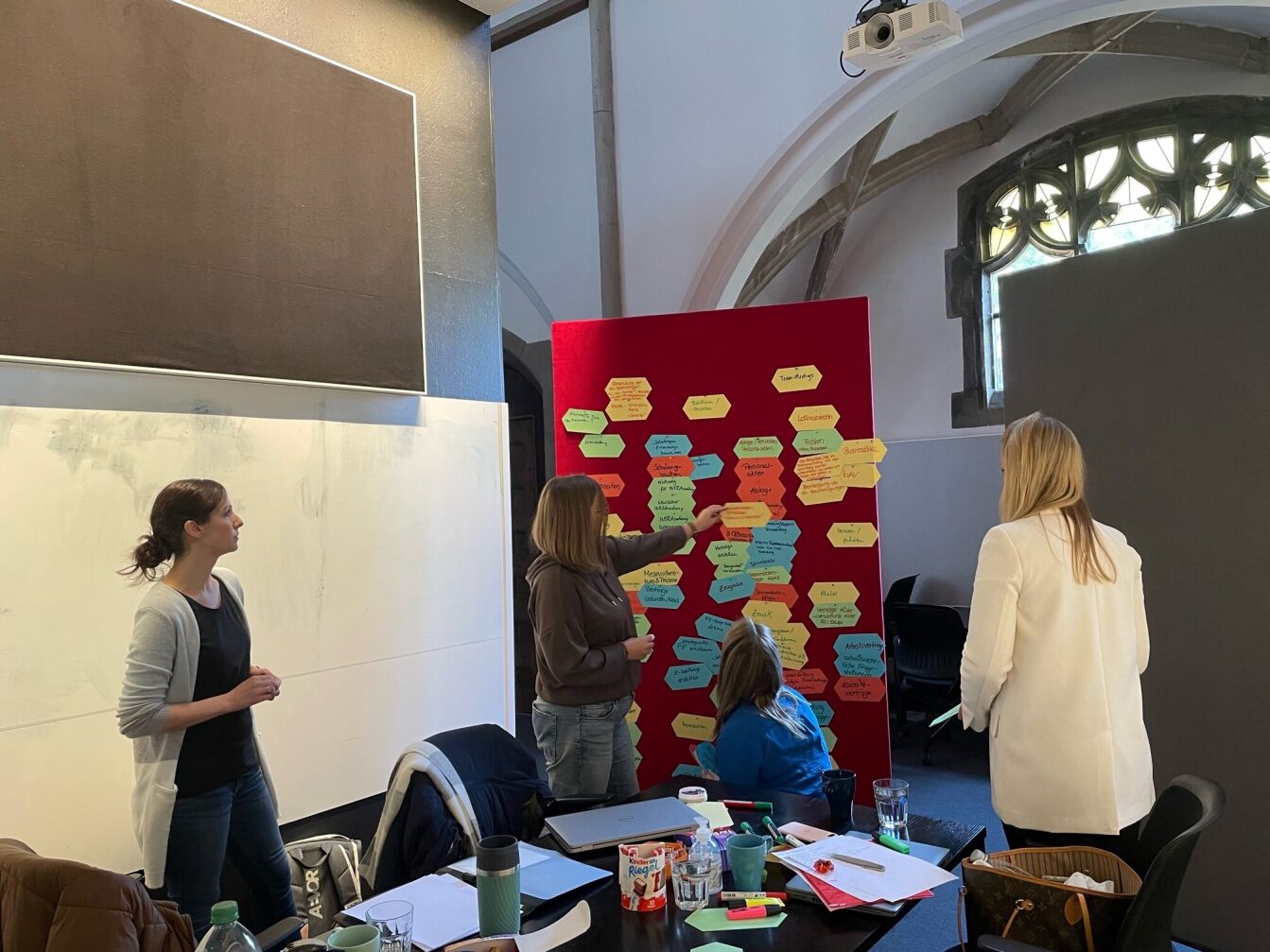 Self-organization in the HR team at Intravis
Self-organization in the HR team at IntravisAt first glance, INTRAVIS is a classic medium-sized mechanical engineering company, but if you take a closer look, it has a special structural feature: The HR department has been self-organized for two years and has no departmental management. In concrete terms, this means that the five-member HR team works independently and autonomously together and also has a high level of decision-making authority - within a framework set by the management. It can set its own goals in line with the company's objectives, determine working methods and develop solutions. Flat hierarchies, a high level of decision-making authority, a lot of freedom - this may sound tempting to many employees. But it's not quite that simple.
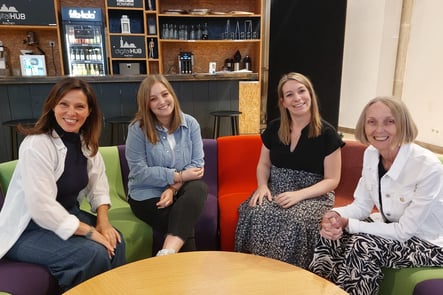 Intravis Interview
Intravis Interview
To learn more about how this decision came about at INTRAVIS, what experience the HR team gained along the way, and what role the digitalHUB Aachen played in the process, we spoke with Lisa Florack and Lena Ollfisch from the HR team, Inge Schiffer - then CFO and divisional manager at INTRAVIS, and Petra Großmann, Coach & Consultant at the digitalHUB Aachen.
How it all began: First points of contact with the New Work idea
At the time, Inge Schiffer was CFO at INTRAVIS and responsible for Corporate Services; she has since moved to the staff position of Organizational Development Digitalization. By chance, she came across the New Work concepts of the French coach and consultant Fréderic Laloux; his book "Reinventing Organizations" in particular strongly influenced her.
 inge schiffer 4 zu 3
inge schiffer 4 zu 3
The HR department at INTRAVIS was also familiar with New Work topics and the model of self-organized teams through its division manager and the New Work Masterclasses in the digitalHUB. After the then HR department head left in spring 2021, the HR team, together with its then department head Inge and the management, made the decision to work in a self-organized manner in the future.
"The idea and the desire came from the team, but of course the colleagues knew that I would be very open to the idea. At the beginning, I gave a 'fire speech' and asked the colleagues if they realized what they were getting into and sensitized them to the fact that they all had to be ready to take responsibility and make decisions themselves," says Inge.
From the classically managed team to self-organization
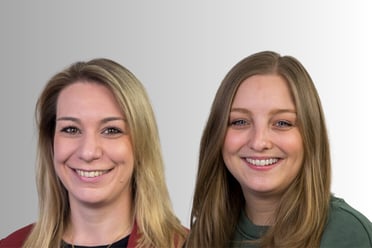 Lisa und Lena
Lisa und Lena
"At the beginning, we divided up among ourselves all the tasks that our department head had previously taken on. New topics kept coming up, which we tackled. In the process, we repeatedly examined our strengths and discussed the distribution of tasks and scope for decision-making. Each of us was regularly asked to leave our comfort zone and learn new things," Lisa reports.
"We also had to find ourselves anew as a team. In that phase, it was super important that we take time for ourselves. The support from Miriam and Petra was particularly valuable here; they gave us time and space to talk about issues that get lost in the daily work routine," says Lena.
Support and coaching by the digitalHUB
In the first year of self-organization, the HR team met once a month with Petra and Miriam, who brought a new topic from the areas of new work, self-organization and team collaboration to each meeting. Individual topics and challenges of the HR employees were also taken into account. The meeting started with the topic of roles and personalities in the team.
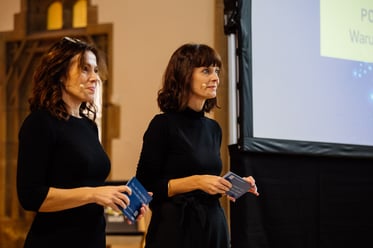 221124-digitalCULTURE_DAY_202_Fotograf Martin Braun
221124-digitalCULTURE_DAY_202_Fotograf Martin Braun
Another workshop dealt with the topic of decision-making and the associated consequences. It was about how decisions are made, what tools can be used and what types of decisions there are. The workshop on team collaboration also provided valuable insights that the HR team used in establishing its new meeting culture and meeting structure. The facilitation role of the HR meetings now changes weekly, there is a meeting check-in and check-out, feedback rules, and at the end of each week, a joint weekly review where colleagues discuss what went well and what can be improved.
"We learned about various tools during the workshops, read up on them, tried out many things and adapted them individually to our team, but some of them are still in use.
Challenges and successes
An important topic and a challenge, he says, was also the issue of visibility of the new structure of the HR department in the company. After all, working as a self-organized team in a classic hierarchically organized company requires communication and clarification. After the removal of the department head, some employees and managers at INTRAVIS were initially unclear who they could turn to.
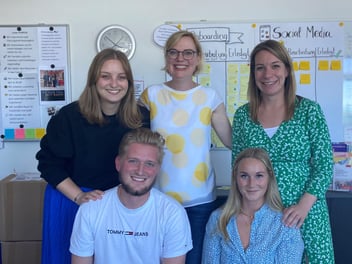 Team
Team
Inge reports that the step into self-organization is a challenge not only for the self-organized team, but also for managers:
"Letting go and handing over responsibility are not easy. You have this process more often, for example, when you hire new department heads as a manager. Then you have to trust someone, but now I had to trust an entire group. And I didn't know exactly in detail how the team worked - that's a whole other step."
Self-organization as the key to success
After more than a year of support, the HR department held its final workshop with the two digitalHUB coaches in spring 2023. Lena and Lisa draw a very positive conclusion:
"For me personally, working in a self-organized team is just right. It's a mixture of being a leader and being able to shape things, but at the same time you are and always remain part of the team," says Lena.
Lisa adds: "For us, the path to self-organization was exactly the right one. The guidance from Petra and Miriam was a very very big support in the process."
When asked whether the journey towards self-organization and the transformation process had now come to an end with the final workshop, Lisa replies, "The final workshop was a milestone where we looked back and realized what we had achieved. But also with the attitude: it's never over. We have to keep working on ourselves and our collaboration."
New challenges are already on the horizon, because teams are always dynamic. Lisa will soon be going on maternity leave, there is a new area manager because Inge has changed her position in the company, and in addition, new colleagues have to be integrated into the team and introduced to self-organization.
But one thing is clear: For the INTRAVIS HR department, the step into self-organization was absolutely worth it.
"The opportunity to work so intensively with our team and with methods of collaboration, and at the same time to take on so much responsibility together, has allowed us all to grow a lot, both professionally and personally," Lena sums up.
By the way, self-organized work is not suitable for every company and every team, because the employees have to be very willing to deal with themselves and the team, Petra explains in conclusion. The great opportunity of self-organized work and intensive engagement with the team, however, lies in the fact that it creates particularly successful teams:
"Because it's not about having the best performers with the best university degrees in the team, but rather how people work together, whether they trust each other, is crucial for success. Of course it helps if you're good at what you do. But it's not professionalism that makes teams successful," says Petra.
Text Source & Editorial: digitalHUB Aachen e.V.